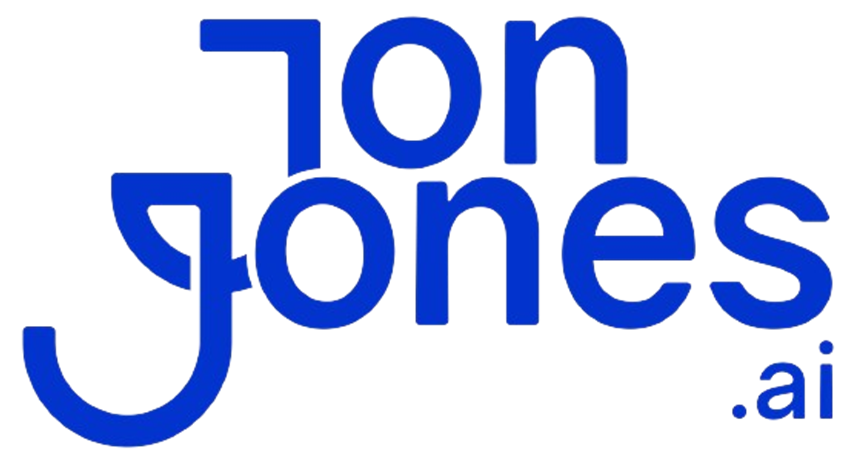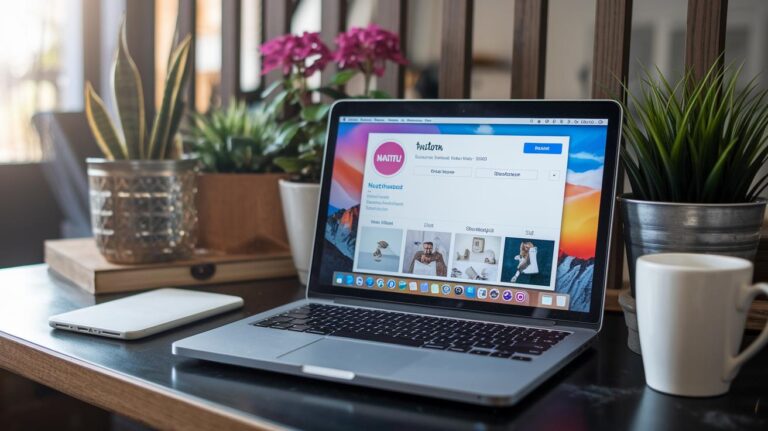Ever wonder how many leads you’re losing by sending LinkedIn invites one by one? You could be missing out on hundreds every month.
You don’t have to burn hours on connection requests and endless follow-ups. We dug into user reviews, price tags, and growth features to handpick five top automation platforms.
Whether you’re flying solo with a simple CRM or running an agency-level dashboard, you’ll see which tool fits your stage. Next, you’ll learn how each one speeds up your prospecting so you can jump into real conversations that close deals.
We break down how they handle automated connection invites, drip campaigns (a series of scheduled follow-up messages), and personalized messaging. That way, you spend your time on sales, not busywork.
Nice.
Top LinkedIn Automation Platforms Compared

We handpicked these LinkedIn automation tools by looking at user ratings, budget-friendly starting prices, and options to scale up. They cover the essentials: sending connection requests, managing drip campaigns, and personalizing messages, so you can streamline your LinkedIn prospecting.
| Tool Name | Rating (out of 5) | Starting Price (per month) | Key Features |
|---|---|---|---|
| LeadFuze | 4.7 | $132 | AI-powered lead sourcing (algorithm that finds new prospects), granular firmographic filters |
| Dux-Soup | 4.0 | Free / $41.25 Turbo | Automates profile visits, skill endorsements, messaging |
| Expandi | 4.2 | $99 | Human-like delays, hyper-personalized outreach with GIFs |
| MeetAlfred | 4.1 | $29–199 | LinkedIn/email/Twitter automation, built-in CRM |
| Octopus CRM | 4.0 | $6.99–$24.99 | Bulk invitations, messaging, Zapier & HubSpot sync |
| Zopto | 4.9 | $215–895 | Agency dashboards, A/B testing, multi-user support |
If you’re a solo founder or early-stage entrepreneur, Octopus CRM and Dux-Soup give you solid outreach without breaking the bank. Small teams will love MeetAlfred’s built-in CRM or Expandi’s human-like personalization. And if your agency needs to run high-volume campaigns, Zopto’s multi-user dashboards and easy A/B testing are a game changer.
Core Capabilities of LinkedIn Automation Tools

Ever feel swamped by manual LinkedIn outreach? We get it. These tools handle the busywork so you can focus on real conversations.
- Send Connection Requests: Line up hundreds of invites with just a few clicks.
- Run Messaging Drip Campaigns: Schedule follow-up messages when prospects don’t reply.
- Segment Prospects: Filter your audience by industry, company size, or custom tags.
- Do A/B Testing (comparing two versions): Test subject lines and message copy to boost reply rates.
- Emulate Profile Visits: Automatically cycle through profiles to raise your visibility (Linked Helper).
- Scrape Data and Export: Pull lead info and send it straight to your CRM (customer relationship management software) or Google Sheets (PhantomBuster).
Refer to the comparison table above for tool-specific features.
LinkedIn Automation Tools with CRM and Workflow Integration

Tools like LinkedIn Sales Navigator and LeadFuze let us plug lead suggestions and company updates right into your CRM. LeadFuze’s AI (artificial intelligence) powered lead enrichment brings top contacts into your system. You can learn more at AI for lead generation.
Octopus CRM’s HubSpot sync automatically logs new connections, messages, and campaign tags. That way, your sales team sees every LinkedIn interaction without flipping apps. Centralizing your data means you never miss a follow-up or end up with duplicate entries when a prospect replies.
When you want more flexibility, third-party bridges really shine. Octopus CRM includes a Zapier (an automation tool) workflow connector that links LinkedIn actions to any app in your stack. Create tasks, send emails, or update records in real time.
PhantomBuster exposes CRM data through its API (application programming interface) endpoints. It exports lists and detailed contact fields to Google Sheets or your favorite database.
Waalaxy supports GDPR (General Data Protection Regulation)-compliant multi-channel sequences. It feeds data into your existing sales stack and triggers automated email or SMS follow-ups when prospects engage.
This level of integration keeps your pipeline fresh and cuts down on manual handoffs across tools.
Pricing Models for Best LinkedIn Automation Tools

We see most LinkedIn automation platforms use monthly subscriptions. They often come with a free trial and an annual rate that cuts your overall cost. A few even offer a one-time purchase or a startup bundle with extra seats and credits.
Here’s a quick look:
- LeadFuze starts at $132 per month.
- Dux-Soup lets you get started for free. Pro is $14.99, Turbo is $55, and Cloud is $99.
- Expandi runs $99 each month and includes a 7-day trial with human-like delays.
- MeetAlfred ranges from $29 to $199 per month, depending on the features you pick.
- Octopus CRM covers the basics from $6.99 up to $24.99 per month.
- PhantomBuster’s plans go from $59 to £399 monthly, and you get a 14-day trial to test its multi-platform scraping.
When you review pricing, line up your outreach volume and must-have features with your budget. Solo users or small startups often find Octopus CRM or Dux-Soup handles daily invites and messages just fine. Growing teams tend to pick LeadFuze or PhantomBuster if they need extra lead credits and deeper company filters.
Also, don’t forget to factor in annual discounts or grab a startup bundle for bonus seats and credits.
Safety and Compliance in LinkedIn Automation Tools

LinkedIn clamps down on automated activity. Any bulk messaging or mass invites beyond what a human would do can trigger holds or outright bans. When we talk about LinkedIn automation tools (tools that automate actions on your LinkedIn account), you want ones that respect these limits and keep your campaigns from raising red flags.
To stay compliant, look for tools with built-in safeguards. These features help you mimic human behavior instead of robotic blasts:
- rate-limiters (rules that cap actions per hour or day)
- delay algorithms (random pauses between actions)
- IP rotation (switching your internet address to spread out your traffic)
For example, Expandi caps invites at 100 per day, adds random delays, and gives you a dedicated IP. Dux-Soup has kept a clean record since 2015 by rolling out frequent updates and automatically pausing tasks once you hit your own thresholds. MeetAlfred also offers automated pauses, but some users have still run into LinkedIn holds when they pushed daily quotas too hard.
Want safety tips beyond LinkedIn? Tap into our cross-channel best practices in social media automation. And don’t forget to enable policy violation alerts in your dashboard. Those real-time warnings let you tweak limits or hit pause before LinkedIn ever notices.
Best Practices for LinkedIn Automation Usage

Start by making every note feel personal. Write a quick line about a shared interest or a recent post so it doesn’t read like spam. Use pause triggers (rules that stop your outreach if someone replies) and skip profiles you’re already connected with. That little personal touch turns automation into genuine conversation.
Keep your daily connection requests at human pace, around 20–50 per day, not 500. Stick to your tool’s built-in limits or set your own conservative caps. For brand-new accounts, flip on the warm-up sequence (a gradual ramp-up that trains LinkedIn to see you as a real user) so you can build trust and stay in good standing.
Watch your campaign health like a hawk. Turn on downtime alerts so you know the moment your automation can’t reach LinkedIn or hits a rate limit. Look for:
- stalled sequences
- error messages
- sudden drops in sent requests
When an alert pops up, pause your campaigns, tweak your settings, then resume once everything’s back to normal. This vigilance keeps your account safe and your lead flow steady.
User Feedback and ROI Insights on LinkedIn Automation Tools

You can check the comparison table above for G2 (peer-reviewed software ratings) scores and user counts.
Automation handles connection invites, follow-ups, and profile visits for you. That frees up about 8 hours per week per user, 96 hours a month. One agency told us, “We reclaimed 10 hours weekly, so we could dive into client strategy instead of manual outreach.” Nice.
Lead quality jumped 35% in three months once our drip campaigns (automated message sequences) started feeling genuinely personal. A marketing manager said, “Our MQLs (marketing-qualified leads) were already warmed up before we ever picked up the phone.”
Built-in dashboards deliver daily or weekly performance reports, no spreadsheet crunching needed. For example, Sendible’s campaign view shows a bar chart of weekly responses next to a line graph of click-throughs. Imagine opening your Monday report and seeing “Response rate up 12% this week” at the top.
These real-time insights let you shift 20% of your outreach budget toward audiences that convert higher. Stakeholders get a clear ROI (return on investment) tracking metric to rally around. It proves automation isn’t just about saving time, it’s about driving revenue, too.
Getting Started with LinkedIn Automation Tools Setup

First, we match the tool features to your goals. If you’re on your own, you want something simple to use. If you’ve got a team, look for collaboration features. Then check which browsers the tool supports, some only run in Chrome, others work everywhere. Now we’re set to walk through each setup step by step.
Installing and Configuring Dux-Soup
Go to the Chrome Web Store, grab Dux-Soup, and add it to your browser. Click the puzzle-piece icon, then sign into LinkedIn when it pops up. In settings, pick your target filters, job title, location, or company. Hit “start” and watch connection invites and profile visits roll out.
Setting Up Expandi Sequences
Sign into Expandi and whitelist your IP so LinkedIn sees real activity. Under settings, choose human-style delays, random pauses between actions to keep things natural. Next, build a simple sequence: an intro message, a follow-up, and a reminder. Press “start” and let Expandi run that flow while you catch up on new replies.
Launching Your First LeadFuze Campaign
Log into LeadFuze and enable Fuzebot, its AI lead-sourcing assistant (an algorithm that finds sales prospects). Then set filters like industry, company size, and tech stack. With one click, export leads straight to your CRM so reps can start outreach right away. Sit back and watch new contacts fill your pipeline each day.
Final Words
In the action, we lined up the top six LinkedIn automation platforms based on ratings, price, and features. We walked through core functions, from connection requests to drip campaigns, and showed how CRM integration keeps leads flowing.
We also broke down pricing tiers, safety measures, and expert best practices that keep your account secure. You saw real user scores, ROI insights, and step-by-step setup guides.
Here’s the good news: with the best LinkedIn automation tools in hand, you’ll generate high-quality leads and reclaim hours for growth.
FAQ
What are the best LinkedIn automation tools according to Reddit?
The best LinkedIn automation tools according to Reddit include Dux-Soup’s free plan for profile visits, Expandi’s human-style outreach, LeadFuze’s AI-powered sourcing, and MeetAlfred’s multi-channel sequences.
What are the best free LinkedIn automation tools?
The best free LinkedIn automation tools include Dux-Soup’s free plan for basic visits and messaging, Octopus CRM’s trial for bulk invites, and PhantomBuster’s starter tier for simple data exports.
Which LinkedIn automation tools top the charts for 2025?
The top LinkedIn automation tools for 2025 include Zopto’s agency dashboards, LeadFuze’s AI sourcing, Expandi’s human-style sequences, Dux-Soup’s simple automation, and MeetAlfred’s multi-channel workflows.
What LinkedIn tools boost lead generation and outreach?
LinkedIn tools that boost lead generation and outreach include LeadFuze’s AI-powered lead sourcing, Expandi’s hyper-personalized sequences, MeetAlfred’s email and LinkedIn follow-ups, and Dux-Soup’s bulk messaging features.
What tools can automate LinkedIn posts?
Tools that automate LinkedIn posts include MeetAlfred’s content scheduler, Buffer’s LinkedIn integration for queued publishing, and Hootsuite’s bulk uploader to plan and auto-publish updates.
Does LinkedIn allow automation tools?
LinkedIn allows approved automation tools but warns against scraping and excessive messaging. You’ll stay compliant by using tools with human-style delays, rate-limit settings, and policy alert features.
What is the best AI tool for LinkedIn?
The best AI tool for LinkedIn is LeadFuze with its Fuzebot, which uses AI to find top prospects, apply firmographic filters, and export them directly to your CRM.
Is Dripify better than Dux-Soup?
Dripify excels at timed sales funnels and drip campaigns, while Dux-Soup offers free basic automation, profile visits, and skill endorsements. Pick Dripify for funnels and Dux-Soup to handle quick, budget-friendly tasks.






